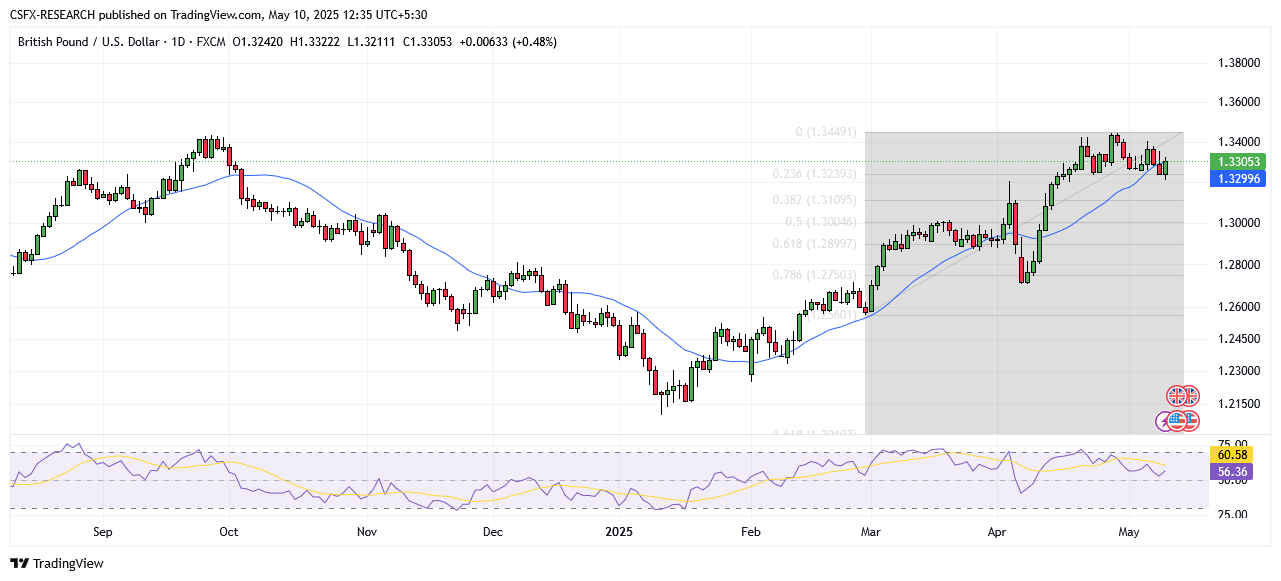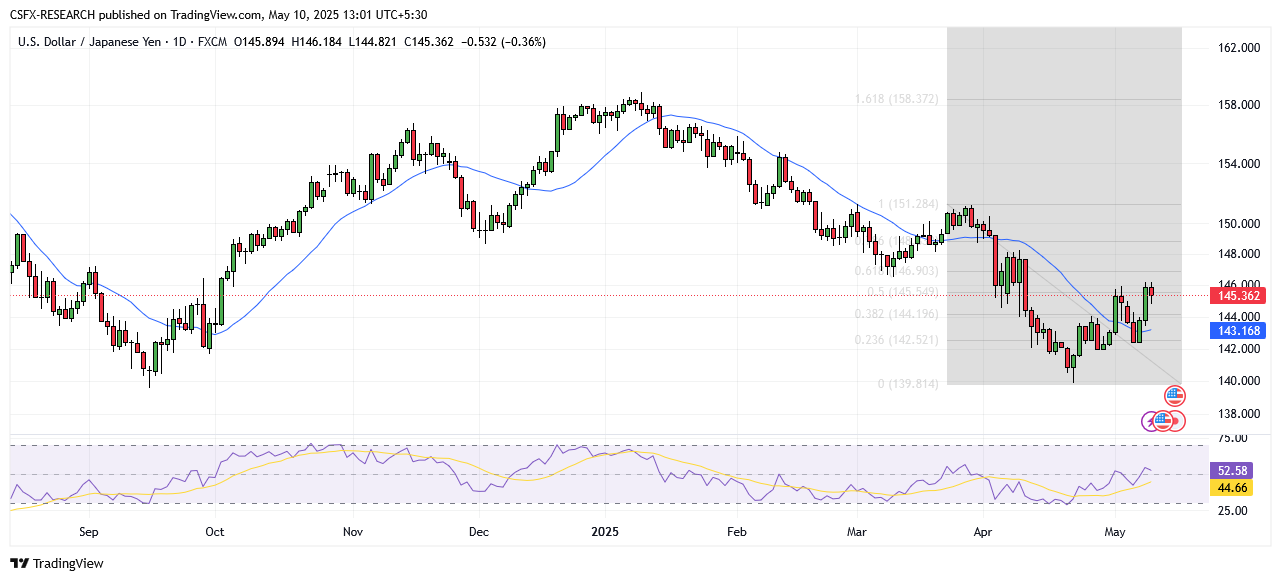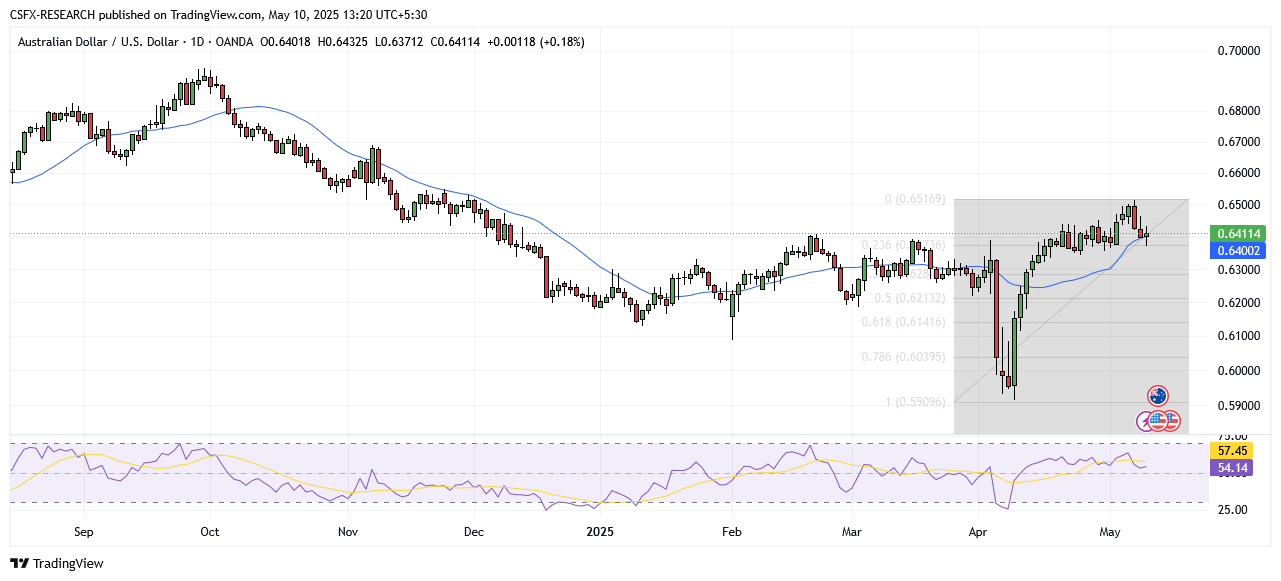Major currency pairs encountered elevated pressure this week amid diverging central bank policies and global trade realignments. The US Dollar strengthened across the board, placing downward pressure on the Euro, British Pound, Japanese Yen, and Australian Dollar. With key US inflation data and UK GDP figures due this week, both American and British traders are preparing for increased volatility across forex markets. These upcoming releases, in conjunction with the latest trade agreements, are set to shape near-term direction.
KEY HIGHLIGHTS
- EUR/USD declines as Fed remains hawkish, ECB eases policy.
- GBP/USD weakens after BoE cut, US Dollar gains strength.
- USD/JPY steady near highs amid Fed-BoJ yield divergence.
- AUD/USD supported by RBA rates, faces global trade risks.
EUR/USD: Euro Under Pressure as Fed Stays Hawkish, US Trade Developments Support Dollar
Market Overview
For traders in London and New York, the EUR/USD pair remains in the spotlight after a turbulent week. The Euro attempted a modest recovery late last week, lifting from its multi-week low below 1.1200. However, EUR/USD still logged its third consecutive weekly loss as the Greenback rallied on optimism surrounding trade developments and the Federal Reserve’s firm stance.
Key drivers for UK and US traders include:
- A shift in sentiment following US President Trump’s announcement of a limited trade agreement with the UK.
- The European Central Bank’s (ECB) dovish path, including a second rate cut in three meetings.
- The Federal Reserve’s data-dependent yet hawkish tone, which supported the US Dollar Index (DXY) above 100.00.
Technical Overview

Moving Averages
- Exponential MAs:
- MA 10: 1.1300 – Bearish
- MA 20: 1.1271 – Bearish
- MA 50: 1.1079 – Bullish
- Simple MAs:
- MA 10: 1.1318 – Bearish
- MA 20: 1.1346 – Bearish
- MA 50: 1.1059 – Bullish
Indicators
- RSI: 51.28 – Bullish Bias
- Stochastic Oscillator: 10.80 – Oversold, Neutral Signal
Key Levels
- Resistance: 1.1530 / 1.1718
- Support: 1.0923 / 1.0735
Overall Sentiment: Bullish
Market Direction: Buy
Trade Suggestion:
- Limit Buy: 1.1192
- Take Profit: 1.1349
- Stop Loss: 1.1098
GBP/USD: Pound Slides Despite BoE Cut and UK-US Trade Progress
Market Overview
GBP/USD reversed gains last week, closing below key support at 1.3290. UK-based traders were particularly impacted by the Bank of England’s split vote on its rate cut and limited benefits from the US-UK trade deal.
For US and UK markets:
- BoE cut rates by 25bps with a divided vote, sparking policy uncertainty.
- President Trump’s tariff reduction on British goods, while positive, still left major sectors exposed to existing levies.
- Sterling reacted negatively to renewed USD demand and global risk aversion.
Technical Overview

Moving Averages
- Exponential MAs:
- MA 10: 1.3295 – Bullish
- MA 20: 1.3250 – Bullish
- MA 50: 1.3079 – Bullish
- Simple MAs:
- MA 10: 1.3320 – Bearish
- MA 20: 1.3299 – Bearish
- MA 50: 1.3070 – Bullish
Indicators
- RSI: 56.01 – Bullish
- Stochastic Oscillator: 23.78 – Neutral
Key Levels
- Resistance: 1.3439 / 1.3613
- Support: 1.2878 / 1.2704
Overall Sentiment: Bullish
Market Direction: Buy
Trade Suggestion:
- Limit Buy: 1.3249
- Take Profit: 1.3402
- Stop Loss: 1.3170
USD/JPY: Dollar Holds Ground as BoJ Policy Diverges from Fed
Market Overview
The USD/JPY pair saw renewed buying interest in US and UK sessions, driven by the sharp divergence between the Federal Reserve and the Bank of Japan (BoJ). While the Fed remains cautious but firm, the BoJ continues with ultra-loose policies, weakening the Yen further.
UK and US traders are closely watching:
- US inflation data this Tuesday as a key volatility trigger.
- The Fed’s neutral rate decision, paired with strong labor data, which supports rising Treasury yields.
- BoJ’s continued dovish stance, including negative interest rates.
Technical Overview

Moving Averages
- Exponential MAs:
- MA 10: 144.17 – Bullish
- MA 20: 144.23 – Bullish
- MA 50: 146.15 – Bearish
- Simple MAs:
- MA 10: 143.86 – Bullish
- MA 20: 143.19 – Bullish
- MA 50: 146.29 – Bearish
Indicators
- RSI: 52.53 – Neutral
- Stochastic Oscillator: 82.07 – Overbought, Neutral Signal
Key Levels
- Resistance: 148.49 / 150.99
- Support: 140.39 / 137.88
Overall Sentiment: Bearish
Market Direction: Sell
Trade Suggestion:
- Limit Sell: 145.62
- Take Profit: 143.99
- Stop Loss: 146.70
AUD/USD: Aussie Faces Resistance Amid China Risk and Rate Gap
Market Overview
AUD/USD hovered around the 0.6400 mark, with direction shaped by developments in China and interest rate differentials. For UK and US traders, this pair offers indirect exposure to Chinese economic trends due to Australia’s export ties.
Highlights for US/UK traders:
- The Reserve Bank of Australia’s relatively high rates appeal to carry traders.
- A softening Chinese economy may pressure commodity prices and, by extension, the AUD.
- The USD continues to benefit from safe-haven inflows amid trade tensions.
Technical Overview

Moving Averages
- Exponential MAs:
- MA 10: 0.6415 – Bearish
- MA 20: 0.6385 – Bullish
- MA 50: 0.6339 – Bullish
- Simple MAs:
- MA 10: 0.6422 – Bearish
- MA 20: 0.6397 – Bullish
- MA 50: 0.6315 – Bullish
Indicators
- RSI: 54.48 – Bullish
- Stochastic Oscillator: 39.65 – Neutral
Key Levels
- Resistance: 0.6459 / 0.6585
- Support: 0.6050 / 0.5924
Overall Sentiment: Bullish
Market Direction: Buy
Trade Suggestion:
- Limit Buy: 0.6354
- Take Profit: 0.6495
- Stop Loss: 0.6283
Additional Currency Movers (Brief Update)
- USD/CAD: +0.1% at 1.3937
- USD/CHF: -0.03% at 0.8315
- EUR/GBP: -0.25% at 0.8456
- EUR/AUD: Unchanged at 1.7543
- AUD/NZD: +0.11% at 1.049
- USD/CNY: -0.03% at 7.2359
- AUD/SEK: -0.02% at 6.2290
Key Economic Events & Data (USA & UK Focused)
Tuesday
- USA: Core CPI (MoM, Apr), CPI (YoY, Apr)
- UK: Labour Market Report
Wednesday
- USA: Crude Oil Inventories
- Germany: CPI (MoM, Apr)
Thursday
- UK: GDP QoQ, YoY (Q1), GDP MoM (Mar)
- USA: Core Retail Sales, Initial Jobless Claims, PPI, Retail Sales, Fed Chair Powell Speaks
Friday
- Japan: GDP QoQ (Q1)
Trader FAQs
1. Why is EUR/USD facing continued pressure?
Because of diverging central bank policies—namely, the Fed’s hawkish stance compared to the ECB’s recent rate cuts—and USD strength from improved trade sentiment.
2. How does the US-UK trade deal affect GBP/USD?
While it provides slight relief to British exporters, the limited nature of tariff cuts means the deal has minimal impact on Sterling’s long-term strength.
3. What should UK traders watch this week for GBP/USD?
Key GDP figures on Thursday will offer clues into the UK economy’s resilience and could influence BoE policy expectations.
4. Is USD/JPY likely to move above 147.00?
Not unless the Fed becomes significantly more hawkish or BoJ signals deeper dovishness. Current resistance is firm near 146.50.
5. Why is AUD/USD staying stable despite global uncertainty?
RBA’s relatively high interest rates and its link to China’s economy keep it supported, but it remains highly sensitive to global commodity and trade trends.





